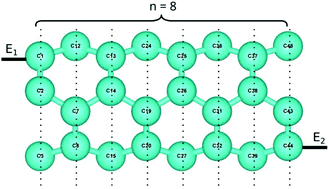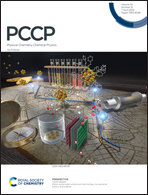Site and length dependent quantum interference and resonance in the electron transport of armchair carbon nanotube molecular junctions
Abstract
The destructive quantum interference (DQI) effect in molecular devices, as characterized by a sharp valley in the transmission function and conductance suppression with several orders of magnitude, is of great interest for both fundamental reasons and technical applications. Planar π conjugated systems, such as benzene, graphene molecules and graphene nanoribbons, are typical examples showing DQI and have been studied most frequently. Carbon nanotubes (CNTs) can be considered as extended planar π conjugated systems, but with a different topology from graphene. In this work, using the Hückel analytical theory, we investigated the transport properties of molecular junctions constructed with armchair CNTs which are weakly coupled to the leads with single site connections. It is found that the transport properties demonstrate obvious oscillation with a period of 3 in nanotube length as defined by the number (n) of atomic planes along the transport direction, which is not observed in graphene nanoribbons. Specifically, when the length is n = 3p or 3p + 1, DQI will be observed at the Fermi level when both leads are connected to the same sublattice, but not observed when they are connected to different sublattices. In contrast, when the length is 3p + 2, the DQI sharp valley will never be observed at the Fermi level. Instead, a resonant peak will appear at the Fermi level when the two leads are connected to the same sublattice. Nevertheless, this resonant peak will not appear for connections with different sublattices. All these results are well explained in terms of the energy spectrum of an armchair graphene nanoribbon model and spatial distribution of the frontier molecular orbitals. The findings demonstrate the great difference between the DQI patterns of graphene nanoribbons and carbon nanotubes due to topology differences.



 Please wait while we load your content...
Please wait while we load your content...